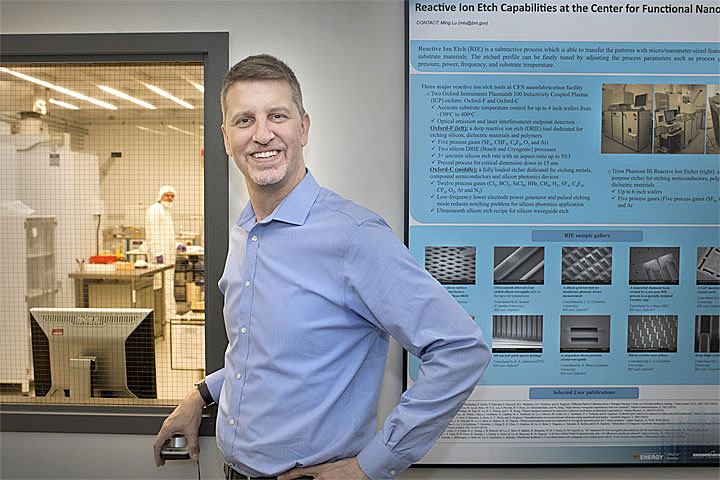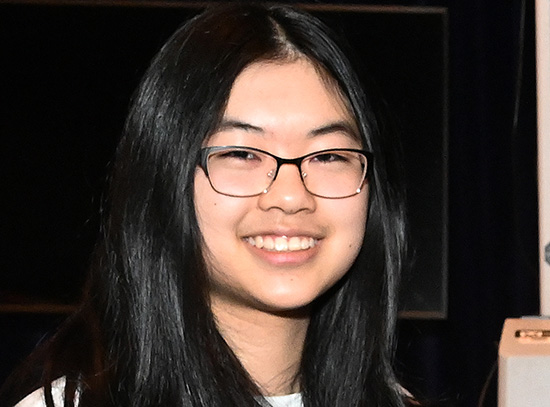A Message from Chuck Black
insights from the CFN Director
January 25, 2019
I hope everyone could spend time during the holidays with their family and friends, enjoying the good feeling of completing a year of hard work. For me, each new year comes with lots of fresh ideas, a renewed optimism, and an energy to continue making progress.
This past December, we took a day at the CFN to celebrate our first 10 years of nanoscience accomplishments, although I still can’t quite understand how the time has passed so quickly. We spent the day recognizing some of the many people who have contributed to the success of the CFN and noting some of the accomplishments we are most proud of. We appreciate everyone who attended our anniversary event, especially those people from the early days of the CFN who shared their thoughts and reflections. So many people have contributed to the success of the CFN and have helped to make it the place it is today.
We’ve never been a more productive nanoscience facility. The CFN is helping more and more scientists accomplish their research, and we’re delivering on our mission to be an essential resource for the nanoscience research community. During our first 10 years, we’ve gotten really good at helping users achieve their goals and fostering the growth of some very talented scientists who are making discoveries that can really impact the world. We’ve gone from supporting around 100 users a year in 2008 to nearly 600 this year. And more importantly, we’re more effective at helping people. In 2008, the CFN contributed to research that resulted in 34 scientific publications, equivalent to about one paper every 10 days. In 2018, use of the CFN was cited in 333 publications, or about one paper every single day.
I am so proud of the CFN and our accomplishments so far. We’ve come a long way, and it’s fitting that we took time to recognize that.
But in my opinion, these accomplishments are just the minimum impact that the CFN can potentially have. I truly believe that we’ve spent this first decade getting ourselves ready and that our most impactful accomplishments are yet to come. Let me explain.
Last year, in a message I wrote for iCFN, I described what I think are the essential qualities of the CFN staff—their technical expertise, commitment to excellence, and dedication to collaborative research. I remarked on the balance that CFN staff members strike between supporting user science and pursuing their own research goals, and the sense of purpose we have in executing our mission. And finally, I wrote about the quiet confidence of our staff. I noted that our staff members believe that they are the best at what they do, yet when supporting CFN users, they willingly put aside their egos and lend their talents to help others. I wrote that CFN staff are humble, that we don’t always have to lead, and that our impacts are measured by the success of the research.
You’ll find all of these qualities in CFN staff members. They are all important elements of how the CFN achieves its goals as an organization.
But as I was thinking about how the CFN can have even more of an impact on society in the next 10 years, I decided that what I wrote last year isn’t quite right.
Make no mistake—the CFN will always have staff members that believe in collaborative science. It’s who we are. We’ll always believe in our mission of helping others, and we’ll be dedicated to working together to achieve higher goals.
But as we move ahead, I will ask the CFN to be slightly less humble about the science that goes on here. Because the Department of Energy challenges the CFN to carry out transformative nanoscience. We are tasked with conducting research that changes the world. And in my view, that’s not a stretch for us. We’re already doing it. For example, did you know that right now in CFN
- We’re making nanomaterials that can capture rare, radioactive gases. These nanomaterials are possibly useful as cancer medicines or for detecting radiation leaks.
- We’ve recently discovered nanomaterials with potential for use as extreme-ultraviolet photoresists, which could power the next generation of microelectronics.
- We’re synthesizing superconductors in new ways that may make them suitable for next-generation qubits in quantum computers.
- We’ve found a way to make lasers from industrial nanomaterials for less than a penny.
These discoveries sound incredible. They sound like things that could transform the world, and they are.
In the next 10 years, the CFN will work to improve the ways we make those transformations happen. We’ll continue to do all the traditional things that scientists do—writing scientific papers and giving presentations of our work at conferences and meetings. But we’ll do more to move our discoveries closer to where they can make a difference. We can do better at that.
For many of us, this proposition is slightly scary. We’re less experienced and less comfortable with a challenge like that, compared to carrying out the basic research we’re already so good at.
To move down this pathway, we’ll need to learn new skills, and most importantly, we’ll need partners who have knowledge and experience that we currently lack. Fortunately, making partnerships is the foundation upon which the CFN is built—we do it every day when we work with our users.
We’re excited for this opportunity and are already taking steps. Our new CFN Assistant Director for Strategic Partnerships Priscilla Antunez is excited to provide guidance as we move down this pathway together.
Embarking to truly change the world through our nanoscience research discoveries is both a daunting challenge and a tremendous opportunity. It’s bold, no question, but it feels well-matched to the unique, excellent nanoscience facility that is the CFN. Let’s work hard together to seize this opportunity, and see where the next 10 years will lead.
—Chuck Black
CFN Director
2019-14354 | INT/EXT | Newsroom










